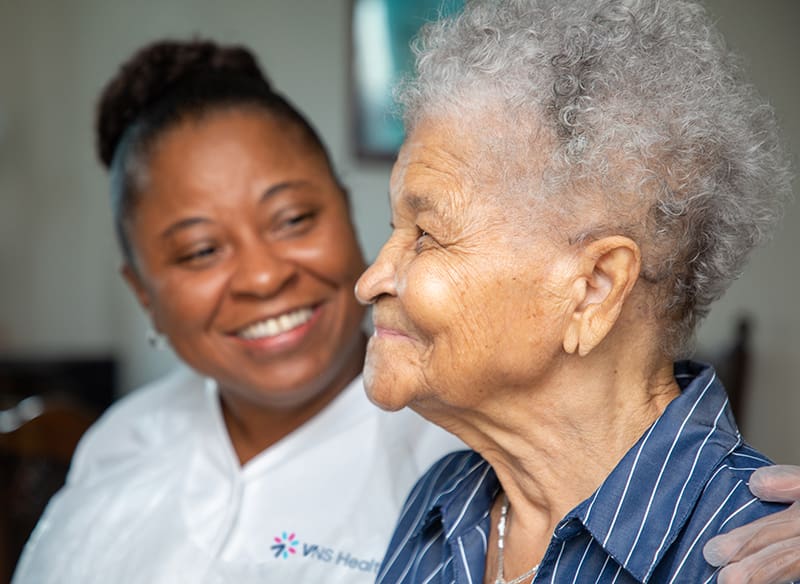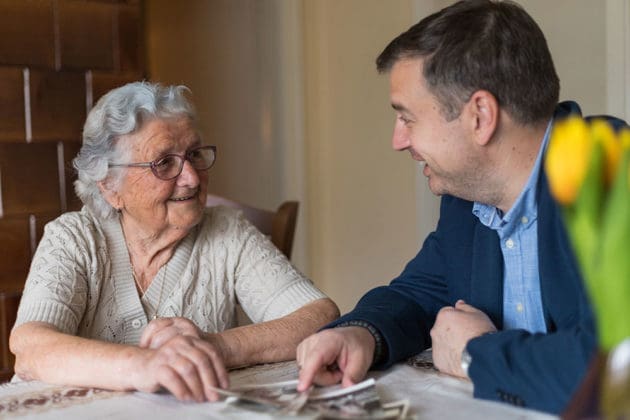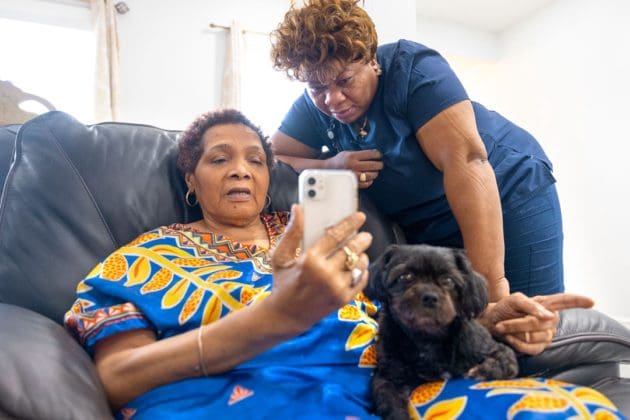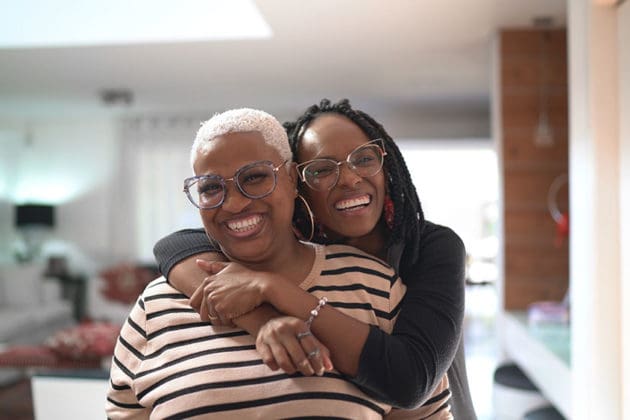
It’s not uncommon for older adults, including LGBTQ+ adults, to be both caregivers and care recipients. Members of the LGBTQ+ community often face different challenges than their non-LGBTQ+ peers. Here’s how your caregiving experience might differ from that of people outside of the LGBTQ+ community, along with some tips to help you get the care you and your loved ones need, when you need it.
When You Need Care
Many people want to stay in their homes as they age — and it’s normal to need a little help to do so.
“As members of the LGBTQ+ community, we bring with us unique health and life experiences,” shares Arthur Fitting, manager of the LGBTQ+ Outreach program at VNS Health. “Successfully navigating the health care system for ourselves and others may present challenges.”
Caregiving support — from friends, family members, and professional home care providers — can fill these gaps. And LGBTQ+ Outreach from VNS Health can help, too.
Getting the right care is important, especially when you or your loved identify as part of the LGBTQ+ community. We offer culturally sensitive support services and programs that can help you get the care you need.
Redefining “Family” Caregivers
When people think about who might provide care for them as they age, they often think of family members. Adult children frequently care for their aging parents. However, LGBTQ+ seniors are less likely to have children than their non-LGBTQ+ peers.
“In the LGBTQ+ community, you may be familiar with the idea of a ‘chosen family’ or a ‘family of choice,’” Arthur says. “These families can be made up of our friends, partners, and loved ones who we choose to be a part of our support network. The people in our chosen family don’t have to be related to us by blood. We understand and respect that these relationships may be stronger than the ones you have with your biological family.”
As you get older, someone in your chosen family might become a caregiver for you. They might drive you to appointments, pick up groceries, or help you manage your health in various ways. Any loved one who is willing and able to help you age well can be a caregiver. However, it’s important to check in frequently to make sure that your chosen caregivers will still be available if and when you need them.
Professional Home Care When You’re LGBTQ+
When you need more support than your chosen family can provide, remember that professional home care is an option to discuss with your doctor. If you’ve had a negative health care experience in the past, you may be wary in general. And if you’ve faced discrimination, you may be concerned about welcoming someone new into your home, especially at a time when you are vulnerable. What if they aren’t accepting of you? What if they don’t respect your pronouns or your gender identity? Will you have to pretend to be someone you’re not? Will you be able to be your authentic self?
All these questions and worries are valid and might make you hesitant to seek out additional care. They might even stop you from moving forward with professional home care at all. But it can be helpful to know that there are LGBTQ+ friendly home care agencies that can provide support as you age, respecting your authentic self and creating a safe space for care in your home.
Whether you are recovering from illness or surgery or just need more help around the house, VNS Health provides care designed to celebrate, support, and affirm your identity. No one should feel like they have to be someone else just to receive respectful home care.
When You’re also a Caregiver
You may find yourself as both a care recipient and a caregiver. In the United States, members of the LGBTQ+ community account for an estimated 9% of caregivers providing care for aging adults, and approximately one in five LGBTQ+ adults are currently caregivers.
Because LGBTQ+ chosen families can be especially close, many older adults might be providing care for a loved one while also needing care themselves. Being on both ends of the caregiving role may be tricky. When you are a caregiver, you might find that you neglect your own health. Trying to balance your needs with someone else’s can get overwhelming.
Remember to respect your own needs and set boundaries around your caregiving role. You can do this by scheduling time for self-care or by sharing caregiving responsibilities with other people. Being the sole caregiver is a good way to burn yourself out, no matter who you are.
Thinking of Yourself as a Caregiver
Members of the LGBTQ+ community may have many different people in their caregiver support system — like family, chosen family, friends, allies, and other loved ones. Because of the close-knit nature of this community, and the role that health plays in it, many LGBTQ+ caregivers don’t name the caregiving role. They see their support as simply “doing the right thing” or “just helping out.”
You might think that how you refer to your role is not important, but it can actually make a big difference. If you don’t think of yourself as a caregiver, you may be less likely to seek out services or resources that can help you, like a caregiver support group. Or if you don’t think of a friend as a caregiver, you might not think you can bring them to a doctor’s appointment to take notes or listen to medical instructions. Communication with everyone involved is important.
“Just like identifying as LGBTQ+ can help you find community and support, the same is true for recognizing that the role of caregiver is an important identity too,” Arthur says. “While the caregiving experience may have some unique differences when you are a member of the LGBTQ+ community, it will always be important, special, and empowering.”


